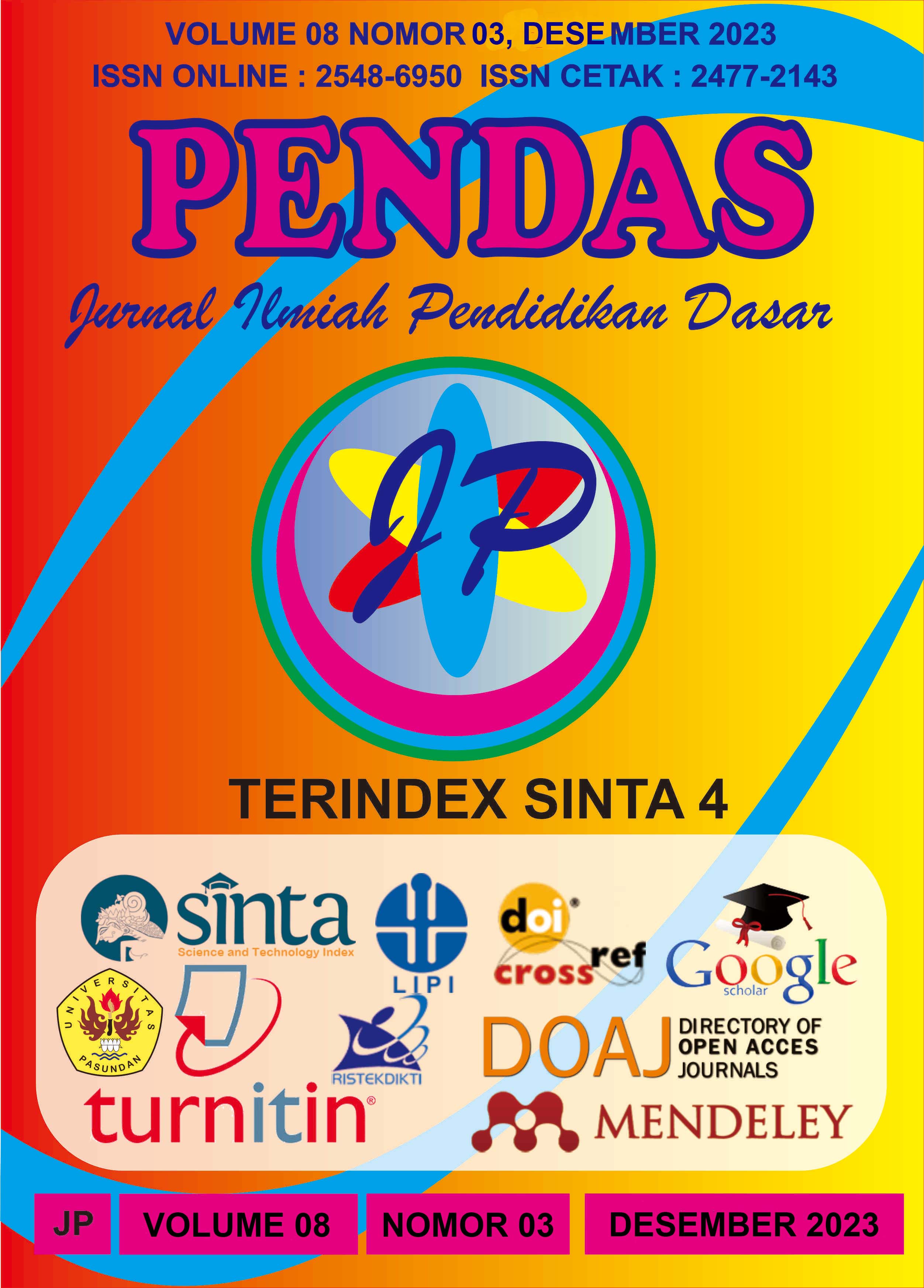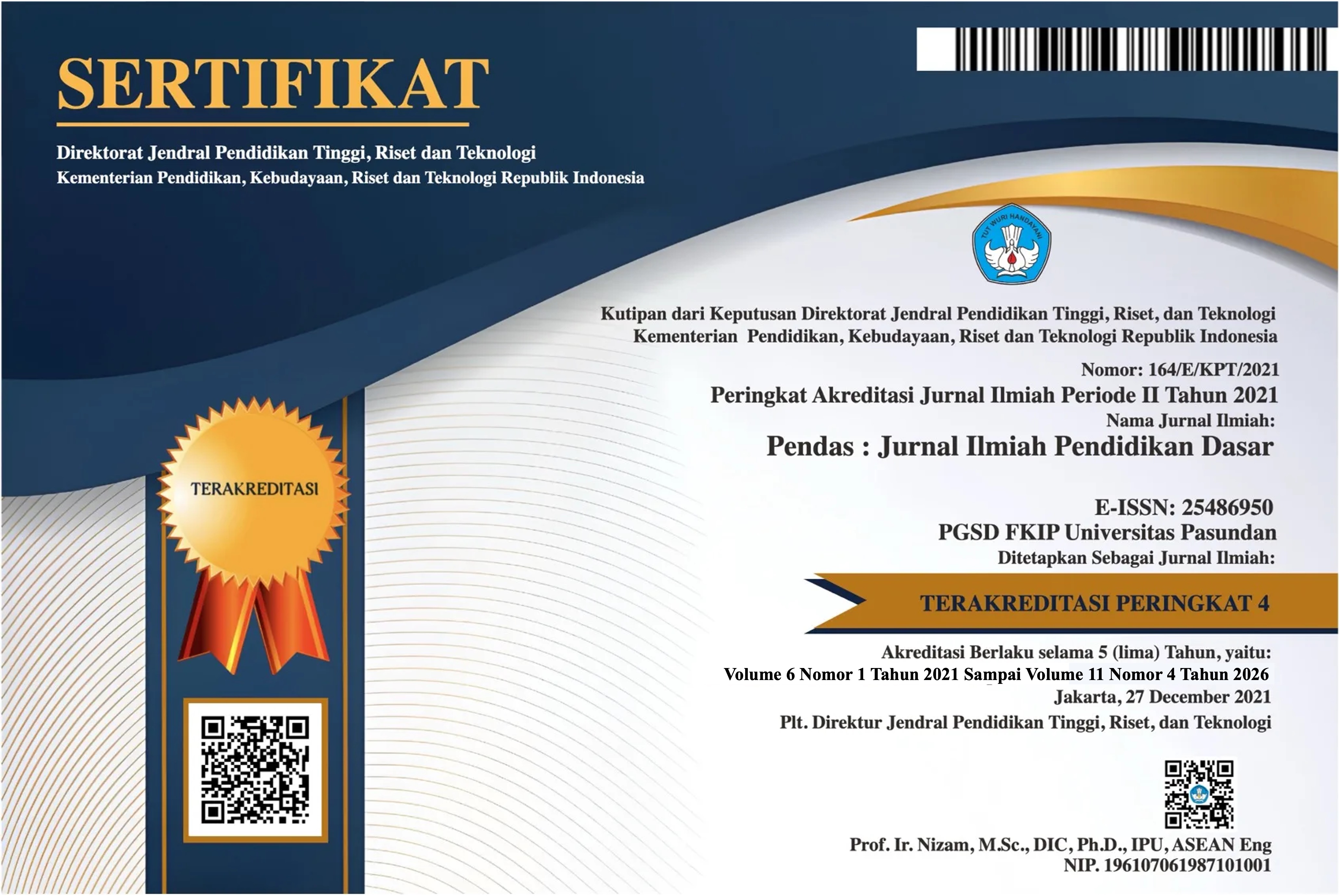EVALUASI PELAKSANAAN PJBL BERBASIS STEAM DALAM PEMBELAJARAN IPAS SD KELAS V
DOI:
https://doi.org/10.23969/jp.v8i3.10626Keywords:
STEAM-PjBL, Product Diferensiasi, Evaluation researchAbstract
This research is motivated by problems that arise in the IPAS learning process, especially in material that requires a lot of theory and very little practical work. One of the factors is the lack of student involvement in learning. This is one of the factors that makes students experience difficulties in understanding the material, one of which is the ecosystem components material. One effort that can be made to overcome this problem is through STEAM learning based on PjBL (project based learning) with the resulting products adapted to the product differentiation strategy. The resulting products are 1) Terrarium making, 2) Role playing 3) Posters and 4) Power Points which are then measured quantitatively using evaluation research. Based on data analysis from the data in the table above, it is known that the average score for all aspects of STEAM products is 81 and falls into the good categoryDownloads
References
Borg, W.R and Gall, M. D, 2003, Educational Research: An Introduction, Longman,New York
Dirjen GTK, (2021). Pedoman Penilaian Lomba Inovasi Pembelajaran , Jakarta : Dirjen GTK
Greenberg, Jerald dan Robert A. Baron. 2003. Behavior in Organization. Prentice. Hall. New Jersey.
Karitas, D. P. (2017). Ekosistem. Kementerian Pendidikan dan Kebudayaan
Kristiani,A. (2012). Panduan praktis membuat dan merawat terarium agar tampil unik dan menarik: “terarium:tanaman mungil dalam wadah kaca”: ISBN 979-3084-96- 0. Agromedia Pustaka.
McMillan JH dan Schumacer, S, 2010. Research In Education: Evidence Based Inquiry. New Jersey : Pearson Education Inc
Nana Sudjana dan Ahmad Rivai. (2010.) Media Pengajaran. Bandung: Sinar Baru Algensindo
Supriyatin Supriyatin, Sri Rahayu, Anggi Putri Suhadi, Remli Nelmian
Simarmata. (2022). Integrasi STEAM -PjBL Pada Pembelajaran IPA Di SMP Negeri 3 Karangmojo, Bantul–Yogyakarta: Proyek Mikroskop.
Astri Yansyah Nurinayah, Sri Nurhayati, Ghina Wulansuci. (2021).Penerapan Pembelajaran STEAM Melalui Metode Proyek Dalam Meningkatkan Kreativitas Anak Usia Dini Di Tk Pelita
Chadia, A. A., M. & Javed K. (2019). The Impact of Active Learning on Students’ Academic Performance. Open Journal of Social Sciences, 2019, 7, 204-211
Haerani,Wahyu Evi. (2017). Pengembangan Media Pembelajaran Powerpoint Interaktif Mengacu Pada Kurikulum SD 2013 Subtema Gaya Dan Gerak Kelas IV. Skripsi Thesis Universitas Sanata Dharma Yogyakarta.
Ovbiagbonhia, A.R., Bas. K., Perry den B. (2019). Educating for innovation: students’ perceptions of the learning environment and of their own innovation competence. Learning Environments Research (2019) 22:387–407
Parsons, S.A., Leila. R. Nuland., & Allison. W. P. (2014). Student learning: Engagement & motivation. Article in Phi Delta Kappan • January 2014.. V95 N8 kappanmagazine.org
Simbolon, M. E., Rosyana, D., & Fitriyani. (2021). Pengaruh Penerapan Media Pembelajaran
Pop-up Book terhadap Hasil Belajar Siswa Sekolah Dasar. Adi Widya: Jurnal Pendidikan Dasar, 6(1), 34–45
Siska, Y. 2011. Penerapan Metode Bermain Peran (Role Playing) Dalam Meningkatkan Keterampilan Sosial Dan Keterampilan Komunikasi Anak Usia Dini. Jurnal Edisi Khusus No.2: 31-37
Wahyuningsih, S., Nurjanah, N.E., Rasmani, U.E.E., Hafidah, R., Pudyaningtyas, A.R., & Syamsuddin,
M.M. (2020). STEAM Learning in Early Childhood Education: A Literature Review. International Journal of Pedagogy and Teacher Education (IJPTE) (Vol. 4 Issue 1)
Downloads
Published
Issue
Section
License
Copyright (c) 2023 Pendas : Jurnal Ilmiah Pendidikan Dasar

This work is licensed under a Creative Commons Attribution 4.0 International License.



















